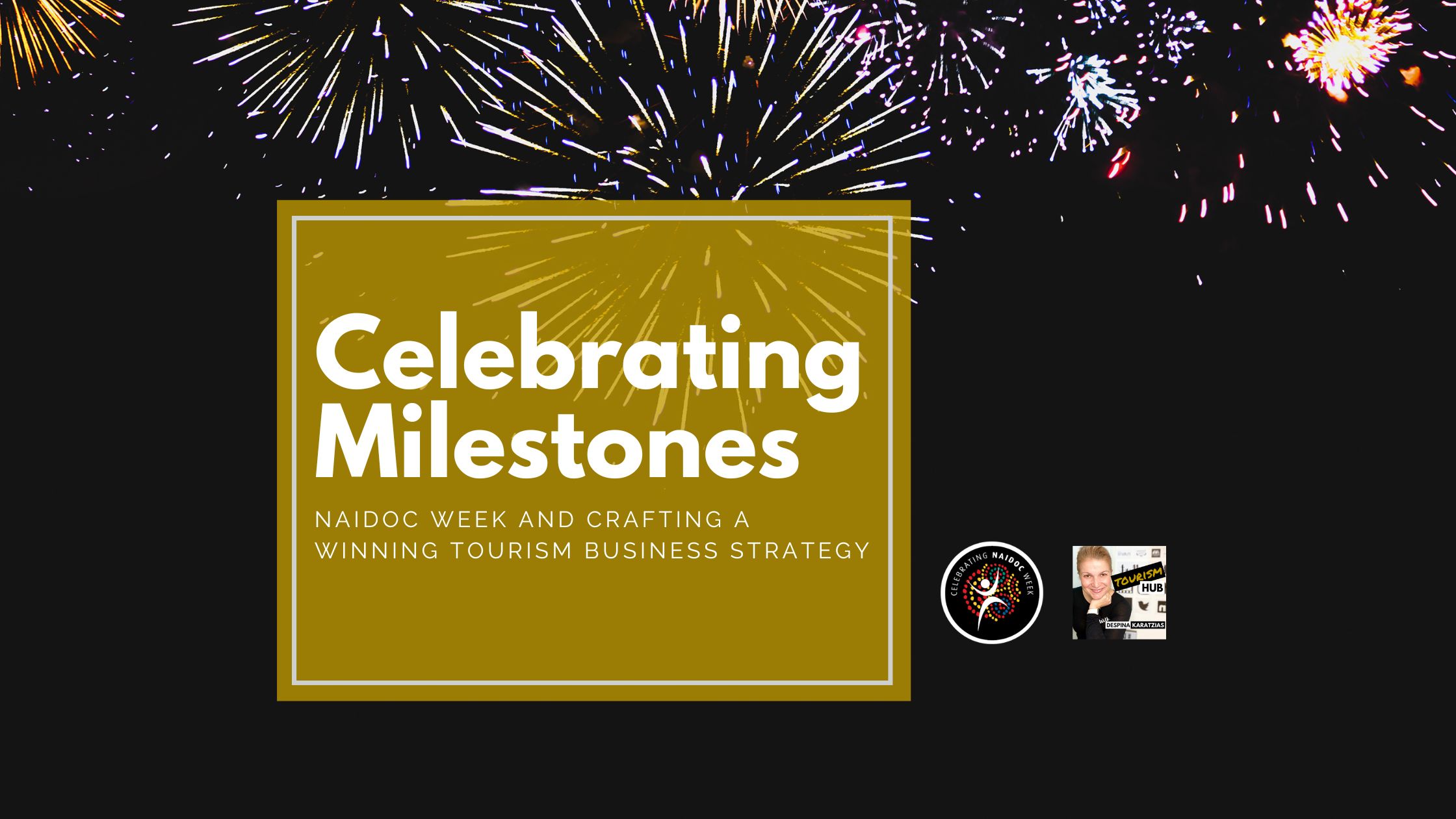New businesses spring up every day in Australia, and unfortunately, research shows us many disappear almost as fast. Assuming there’s a practical idea backed up by proper investment and a sound business plan, a core reason for small business closing their doors is a failure to grasp essential digital marketing strategies.
Small business marketers (SBMs) face an overwhelming array of possibilities. The first hurdle is deciding how to allocate limited resources, i.e, which marketing strategies to deploy to get the best return on investment (ROI), not only in monetary terms but also of time and creative energy. Should you focus on search engine optimisation (SEO), content marketing, online and offline advertising campaigns, blogging networks, social media marketing or… what?
Successful SBMs make sure their decisions are evidence-based and data-driven. However, what metrics should you use? What parameters of analysis to determine success or failure? How much can you do in-house, and how much could you outsource? Here are five powerful, essential, but often overlooked, marketing strategies for small business marketers.
1. Blogging
Many SBMs make the mistake of avoiding blogging as a marketing strategy. They may understand how blogging works, but they lack confidence in their ability to produce enough high-quality, targeted, interesting content and sustain production over the long term. The problem isn’t a lack of material, but one of perspective.
The mistake these SBMs make is to think they must source content from their business’s pre-existing assets including, mission statement, company vision, product lines, and services. They’re right to assume that’s not enough material to supply years of quality, shareable content. Successful blogging, however, like any form of social marketing, focuses on the target consumer, not the company or the product.
Successful SBMs create blogs which discuss the needs and concerns of their target customer base. Think about your customer frequently asked questions or get in touch with your customer service team, find out what matters and issues people are raising. Visit the social media and forums that your target customers frequent and listen to what they say. Your customers will provide you with an endless source of ideas for relevant, laser-targeted, shareable blog posts that you can, and you must create.
Many tools for monitoring social media and web analytics are useful for discovering search trends in your niche or consumer community. You can mine data about your competitors’ engagement and popularity to inform your strategy. Use tracking and alerts to find out what questions related to your products, services, experience, industry, or niche people are asking search engines. Create content which answers those questions better and in more detail than your competitors.
Listening, consultation, empathy, and engagement also offer an endless supply of ideas for blog content. The customer-centred approach not only inspires, but it also acts as market research, providing information which can feed into other marketing channels. You can use what you learn about your target consumers to inform and refine your sales focus and the stories you tell in your content marketing initiatives.
While your blogging strategy does well to focus on providing valuable content to your customers, you shouldn’t neglect the technical side. Ongoing audits and evaluation are vital to making sure you optimise your web properties and blogs for search and visibility.
2. Search Engine Optimisation (SEO)
Many SBMs view search engine optimisation as technical and difficult. In fact, it’s straightforward. SBMs who inherit long-neglected web properties or hope to get a new project off to the best start with little experience may feel overwhelmed by the prospect of managing ongoing content-creation and optimisation for discoverability in search engines. And that’s what it’s all about, being discoverable and the two go hand-in-hand. There are five aspects of SEO that you must familiarise yourself with:
Keywords
People find content by asking search engines for information. Requests are often, but not always, in the form of questions. Researching the most popular search terms, which could be anything from a single word to a phrase or sentence, and then creating content which answers the needs of the person searching is the foundation of good SEO. These search terms are “keywords.” Integrating keywords into the title and body of the content a few times helps search algorithms find and understand your content.
Google My Business
Google My Business is the digital representation of your physical business. Ensuring your business information is 100% correct on Google My Business is essential. Google your business. Claim your listing if not already done so. Create a listing if one does not exist.
Put some real time and effort into this. Nice pictures. The right business categories. Your Google My Business listing is the digital representation of your business within Google’s infrastructure. It also has massive implications for local business SEO, so give it the attention it deserves.
Copywriting
Good SEO isn’t only about making it easy for search bots to find, understand and index your content. It’s also about the quality of your copy. A vital aspect of SEO is to write targeted content useful to readers. The content must be easy to read and understand. Lay it out well, breaking the text into short paragraphs which are logical, informative, and clear.
If you want to rise to the top of search results, your content must also be competitive. It’s worth researching the top three results in a search for your keywords and making sure that the copy you publish outshines all three. That may mean a longer, more in-depth post, a more niche-targeted angle, better layout and visual appeal with images, infographics, and video, or all three. Aim not to “trick” search algorithms, but to produce the best copy on the web. This task often is best outsourced to professional copywriters who understand on-page SEO.
Linking
Link structure is an essential aspect of SEO strategy. There are three aspects to a positive linking strategy for search engine optimisation. These are internal linking, external linking, and backlinks.
• Internal linking refers to internal links between related content on your site. These links help users find the information they’re looking for and search bots to crawl and to locate all your material. Your website should have a comprehensive XML sitemap.
• External linking refers to links which take the reader off the page to another website or resource whether the destination is part of your overall stable or independent property. Linking out to verifiable, high-quality content in your field improves site authority. External links should be logical, authoritative, and useful.
• Backlinks are links on other sites which direct users to your content. If they come from high-quality, reliable websites, these are gold dust in SEO terms. There’s little SBMs can do to create these other than produce the best content. With time, people will notice that material and a network of powerful, organic, backlinks will develop.
Social Engagement
Social media presence and engagement has become one of the most important aspects of SEO strategy. That doesn’t mean that you must be active on all the social media. It’s more efficient and effective to choose two or three. The research will show which social media are most popular with your target audience. Create business pages on those sites, post your own and other relevant content often, and engage in conversations with your followers.
Vital as it is, social media engagement is a slow-burn strategy. It takes time to build a presence, and then a reputation. Once you develop a following and build authority and trust, you’ll see click-through to your website or sales pages.
Sometimes the most straightforward changes can have the most powerful results in social media SEO. One of the easiest and most effective things you can do is make sure all of your content has visible, attractive social sharing buttons to make it easy for visitors to share your content on their social media. Monitoring which content is most shared and to which media will also help you refine your ongoing social media and content marketing strategy.
3. Social Media Marketing
While social media plays an essential role in contemporary SEO, it’s also vital to any small business overall marketing strategy. Choosing the right social media is only the start. Many small business marketers find keeping up a steady stream of media-rich, high-quality content to be a significant challenge.
Using the right tools can make life a lot easier. Setting up Google Alerts for keywords associated with your core content can save time in finding relevant content to share. Monitor social media for common consumer queries in your industry or niche, then run those queries through a search engine and set up an RSS news feed for the results.
Running similar queries on Facebook, Twitter, LinkedIn, and others can help you find conversations to which you can contribute and from which you can pull targeted content that is worth sharing.
Social media marketing can be time-consuming but never neglect it. Many businesses may outsource the tasks associated with their social media strategy. But using the right tools can decrease the time-to-product ratio, and research saves time wasted on social media not relevant to your target audience.
Keep your eyes on the prize and track your progress. Social media can build brand awareness, increase customer and talent acquisition, improve customer service, make direct sales, retain existing customers, build authority and thought leadership, and raise your brand’s visibility in the mainstream media.
4. Outsourcing
Small business marketers working with a restricted budget may be reluctant to outsource. However, intelligent outsourcing can offer significant long-term returns on investment. Depending on the size of the business, a few small business marketers and owners have enough capacity to handle everything in-house.
The key to successful outsourcing is to make the right decisions about what to outsource, how often, and to whom. It may make sense to outsource at the task level. Hiring a virtual assistant to carry out simple, necessary, but time-consuming tasks can be cost-effective.
Hiring a consultant may be the most efficient way to define and implement solutions to problems in a specific area or help develop your overall marketing strategy. You can outsource work on a one-off or ongoing basis.
It’s essential to make sure you outsource work to trusted persons or entities with a proven track record. Whether hiring short-term or long-term, don’t cut corners by paying less for inferior work. Any good SEO consultant, Copywriter, Social Media Manager, or Virtual Assistant should be able to show you a robust portfolio of earlier work and offer authoritative references from previous and current clients.
5. Evaluate and Measure
A small business manager’s job is complex and multifaceted. The world of marketing and e-commerce is continually changing. A marketing tactic which was effective last year may no longer work this year. To avoid inefficiencies in time and financial investment, build ongoing evaluation and auditing into your overall marketing and management strategy.
Whether outsourced or done in-house, regular audits of web properties help check the value of online assets. Frequent evaluations of ROI, outreach, engagement, brand visibility, and competitiveness, assess the effectiveness of current activity and inform how you divide resources and carry out your marketing strategy.
The world of online marketing and e-commerce is competitive. While shiny new marketing tools and tactics appear every day, it’s vital never to neglect these five essential aspects of successful online marketing. As a small business owner or manager, if you make time to familiarise yourself with, and implement, these core strategies you’ll put you and your business ahead of the game.









